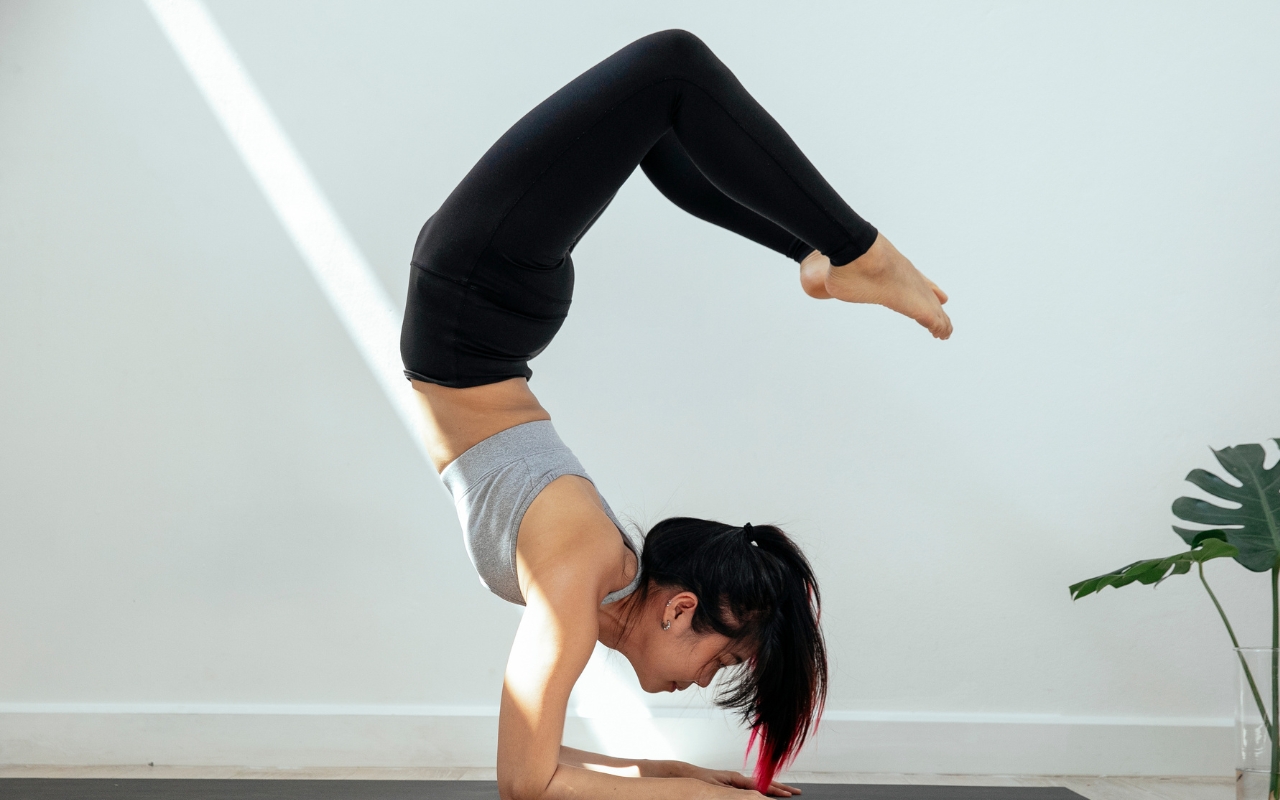Stretching, often seen as the prelude or epilogue to a workout, is an integral yet frequently overlooked component of physical fitness. While many emphasize cardiovascular exercises, strength training, or sports-specific drills, stretching is the bedrock these activities build. Its benefits are manifold, impacting everything from flexibility and range of motion to injury prevention. In this article, we delve deeply into the essence of stretching, elucidating its myriad advantages, the science behind its efficacy, and practical tips for incorporating stretching into your fitness regimen.
The significance of stretching cannot be overstated. It is a pivotal practice that enhances physical performance and contributes to overall well-being. In its various forms, stretching caters to athletes, elderly individuals, and even those recovering from chronic conditions or injuries. The multifaceted nature of stretching makes it an indispensable tool for anyone looking to improve their physical health.
Understanding the Science of Stretching
Before diving into the practicalities of stretching, it is imperative to understand what happens at the physiological level. When you perform a stretch, the muscle fibers elongate, and the connective tissue around them also stretches. This process increases blood flow, allowing more oxygen and nutrients to reach the muscles, which helps in muscle recovery and growth.
There are two primary types of stretching: static and dynamic. Static stretching involves holding a stretch for a certain period, usually between 15 to 60 seconds. This type of stretching is commonly performed after workouts to help muscles recover. On the other hand, dynamic stretching involves moving parts of your body and gradually increasing reach, speed of movement, or both. This is usually done before workouts to prepare the muscles for physical activity by increasing blood flow and muscle temperature.
Stretching also has neuromuscular benefits. Proprioceptors, sensors located in muscles and joints, relay information about body position and movement to the brain. Stretching helps fine-tune these sensors, improving balance and coordination. Enhanced proprioception is particularly beneficial for athletes as it enhances their ability to perform complex movements with greater precision.
The Benefits of Regular Stretching
Increased Flexibility and Range of Motion
One of the most well-known benefits of stretching is increased flexibility and range of motion. Flexibility refers to the ability of a muscle to lengthen passively through a range of motion. In contrast, a range of motion is the degree to which a joint can move before being restricted by the surrounding tissues. Regular stretching helps in elongating the muscle fibers and tendons, allowing for a greater degree of movement.
For instance, practices like yoga and Pilates, which incorporate significant stretching, are renowned for enhancing flexibility. Increased flexibility not only makes everyday activities easier but also improves sports performance and reduces the risk of injuries. A study from the Mayo Clinic underscores the importance of stretching in maintaining flexibility, especially as we age.
Injury Prevention
Stretching can be a potent tool in the prevention of injuries. By increasing flexibility and range of motion, stretching ensures that your muscles and joints are more adaptable to different movements. This adaptability reduces the likelihood of strains and sprains, which are common in activities involving sudden movements or direction changes.
Moreover, stretching improves blood circulation to the muscles, aiding in quicker recovery and reducing muscle stiffness. This is particularly important for athletes who engage in high-intensity activities. Dynamic stretching, which mimics the movements of the activity you are about to perform, is especially effective in preventing sports-related injuries. It prepares the muscles for the exertion, thereby reducing the risk of injury.
Enhanced Athletic Performance
For athletes, stretching is a non-negotiable aspect of their training regimen. Improved flexibility and range of motion translate to better sports performance. Whether you are a runner, a basketball player, or a weightlifter, stretching enhances your ability to perform complex movements with greater ease and precision.
Dynamic stretching, in particular, has been shown to improve athletic performance. By incorporating movements that mimic the specific demands of your sport, dynamic stretching prepares your muscles for the upcoming activity, improving muscle efficiency and power output. Experts say balance exercises can also significantly enhance athletic performance by improving stability and coordination.
Improved Posture and Alignment
Modern lifestyles often involve long hours of sitting, leading to muscle imbalances and poor posture. Stretching helps release muscle tension and align the spine, thereby improving posture. Regular stretching of the lower back, shoulders, and chest muscles can help keep your spine in better alignment and improve your overall posture.
Good posture enhances physical appearance and prevents back pain and other musculoskeletal issues. Stretching exercises that focus on the core muscles are particularly beneficial as they help stabilize the spine and improve alignment. Incorporating a regular stretching routine can bring significant relief to those experiencing chronic pain or discomfort due to poor posture.
Stress Relief and Mental Clarity
Stretching is beneficial for the body and has profound effects on the mind. It reduces muscle tension and promotes relaxation, which can help alleviate stress. This is particularly important in our fast-paced lives, where stress is a common issue. The practice of stretching, especially when combined with deep breathing exercises, can induce a state of mental calmness and clarity.
Furthermore, stretching releases endorphins, the body’s natural painkillers, which can improve mood and reduce feelings of anxiety and depression. Incorporating stretching into your daily routine can be a simple yet effective way to enhance your mental well-being.
Integrating Stretching into Your Routine
Dynamic Warm-ups
Dynamic stretching should be performed as part of a warm-up routine before engaging in physical activity. A dynamic warm-up involves movements that mimic the activity you are about to perform, gradually increasing in intensity. For example, if you are preparing for a run, dynamic stretches like leg swings, high knees, and lunges can warm up your muscles and increase blood flow.
Static Stretches
Static stretching is best performed after a workout when your muscles are warm. This type of stretching helps lengthen the muscle fibers and promote muscle recovery. Key areas to focus on include the hamstrings, quadriceps, calves, chest, and shoulders. Hold each stretch for about 15 to 60 seconds, ensuring you do not stretch to the point of pain.
Incorporating Stretching into Daily Activities
Stretching does not have to be confined to your workout sessions. Incorporate stretching into your daily activities, whether during a break at work or while watching TV. Simple stretches like neck rolls, shoulder shrugs, and side-bends can quickly be done throughout the day to keep your muscles flexible and reduce tension.
Tailor Stretching to Your Needs
Tailoring your stretching routine to meet your specific needs and goals is essential. For athletes, incorporating sport-specific stretches can enhance performance and reduce injury risk. For older adults, gentle stretching exercises can improve flexibility and balance, reducing the risk of falls. For those recovering from injuries or managing chronic conditions, it is advisable to consult a healthcare professional or physical therapist to ensure the stretching routine is safe and effective.
Combining Stretching with Other Forms of Exercise
To maximize the benefits of stretching, combine it with other forms of exercise. Strength training, aerobic activities, and balance exercises complement stretching by enhancing physical fitness. For instance, combining yoga with strength training can improve both flexibility and muscle strength, leading to better overall performance and health.
Special Considerations and Precautions
Stretching with Chronic Conditions or Injuries
If you have a chronic condition or are recovering from an injury, you may need to adapt your stretching routine. Specific stretches may exacerbate existing conditions or injuries if not performed correctly. It is essential to consult with a healthcare provider or physical therapist to tailor a stretching routine that meets your specific needs. For example, if you have a strained muscle, stretching it may cause further harm rather than relief.
Furthermore, individuals with conditions like arthritis should focus on gentle stretching exercises that do not strain the joints excessively. Incorporating low-impact activities like tai chi or yoga can be beneficial for maintaining flexibility without exacerbating symptoms.
Overstretching and Its Risks
While stretching has numerous benefits, it is essential not to overdo it. Overstretching can lead to muscle or joint injuries. Always listen to your body and avoid pushing yourself to the point of pain. Stretching should be a gradual and controlled process, ensuring you breathe normally throughout the stretches. If you experience sharp pain or discomfort, stop immediately and consult a healthcare professional.
The Role of Breathing in Stretching
Breathing plays a crucial role in the effectiveness of stretching. Deep, controlled breathing helps relax the muscles and can enhance the stretch. It also ensures that your muscles receive adequate oxygen, which aids in recovery and reduces muscle tension. Incorporate deep breathing techniques into your stretching routine to maximize the benefits.
Consistency is Key
The benefits of stretching are cumulative, meaning that consistency is key to achieving and maintaining flexibility and range of motion. Aim to stretch at least three times a week, incorporating dynamic and static stretches into your routine. Even short sessions of 5 to 10 minutes can be effective if done regularly. Skipping regular stretching can lead to a loss of flexibility and an increased risk of injuries.
Resources for Further Learning
Several high-quality resources are available online to deepen your understanding of stretching and its benefits. The Mayo Clinic offers comprehensive guides on stretching techniques and their benefits. Additionally, you can explore the National Institute on Aging for information on how stretching can benefit older adults.
Healthline provides various exercises and tips for those looking to enhance their balance and coordination through stretching. These resources offer valuable insights and can help you design a stretching routine that meets your specific needs and goals.
Conclusion
Stretching is a fundamental aspect of physical fitness that offers numerous benefits, from increased flexibility and range of motion to injury prevention and improved mental well-being. Understanding the science behind stretching and incorporating it into your fitness routine can significantly improve overall health and performance. Whether you are an athlete, an older adult, or someone recovering from an injury, stretching can enhance your quality of life in myriad ways.
You can reap the full benefits of this vital practice by integrating stretching into your daily activities, combining it with other forms of exercise, and tailoring it to meet your unique needs. Remember, consistency is key, and by making stretching a regular part of your routine, you can achieve lasting improvements in both physical and mental health.










